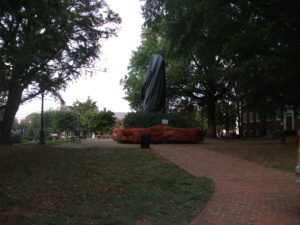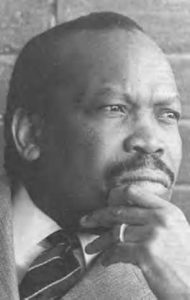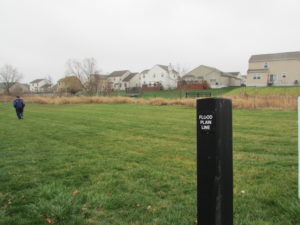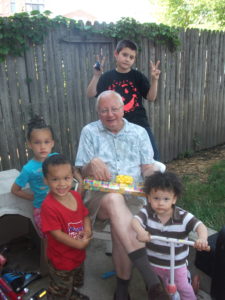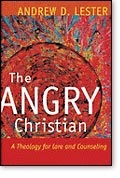Few people live for the excitement of radical demonstrations. Most of us want to enjoy life and, if we can, contribute something positive to society along the way. Thus, it is small surprise that, when hundreds of Ku Klux Klan members, neo-Nazis, and white supremacists arrived in Charlottesville, Virginia, on August 11, and engaged in open intimidation of counterdemonstrators the following day, almost no residents were happy, and many made their displeasure clear. In the end, one Nazi sympathizer from Ohio chose to drive his car into a crowd, injuring numerous bystanders and killing Heather Heyer, a young local paralegal with an admirable history of assisting the disadvantaged.
Thanks to extremely unfortunate and ill-considered comments on the matter by President Donald Trump, Charlottesville has become shorthand in many people’s minds for a controversy about intolerance. But what really happens as a community tries to resume normal life after such distasteful episodes? What happens after the intruders, who among other things took issue with the proposed removal of statues of Confederate leaders, finally leave town and go back where they came from? Only one organizer was a Charlottesville resident, not a particularly popular one at that, and the vast majority of right-wing demonstrators were from outside Virginia—a point emphasized by Gov. Terry McAuliffe in his condemnation of their activities.
I had the opportunity to visit Charlottesville last Monday. To be clear, my primary motive was to visit two retired friends who moved there from suburban Washington, D.C. They had invited me long before the demonstrations took place. I took them up on the offer largely because I had been asked to speak at the North Carolina state conference of the American Planning Association, which began on September 26. I flew into Richmond the previous day and drove to Charlottesville that afternoon. They wanted to show off their new home town and took me to the University of Virginia campus and then downtown, where we eventually had dinner followed by some late-night conversation. I drove to Greenville, North Carolina, the next morning.
I mention all this because I am sharing casual observations, not dedicated reporting or profound knowledge of the city, which I had never previously visited. Even so, I think my observations have some modest value. For one, Charlottesville is a normal, mostly attractive city, a university town of average size (just under 50,000). It is well forested in places and sports some attractive scenery, like much of Virginia. It is easy to see why people would like living there.
It is also largely a progressive city, not unusual for a community with a strong academic history. The Rotunda, the original core of the University of Virginia campus, was designed by Thomas Jefferson in the years after he retired from the presidency to his home at nearby Monticello. The campus thus has a noteworthy history dating back more than two centuries to America’s earliest days. The university has a noteworthy academic history and has produced its fair share of meritorious scholarship. Historic preservation clearly is part of the university’s DNA.
But that history contains a dark side that long remained unacknowledged until more recent times. Much of Jefferson’s architectural handiwork was achieved with slave labor. The slaves who helped build the campus spent many decades deprived of access to the educational opportunities the university provided. Social justice has become a significant focus of the university’s attention in recent decades, once the civil rights movement had forced the entire state to think seriously about racial equality. This is the state, after all, that in the 1960s gave the nation Loving v. Virginia, a U.S. Supreme Court decision that outlawed state laws prohibiting interracial marriage.
To its credit, however, the University of Virginia has been coming to terms with its history. Surely, one can credit Jefferson for remarkable skills and a certain practical genius in both politics and architectural design. His achievements are not to be gainsaid. At the same time, there is no question that much of his life was predicated on and enabled by inequality and the suppression of opportunity for people of color, enslaved or free. His political courage never extended to the liberation of his African-American servants. University walking tours now include very factual discussions of the role of enslaved African Americans, some of whom were openly abused and maltreated on the antebellum campus. Their story deserves to be told along with that of the leaders who created much of the university’s unique heritage. Brochures and information related to historic buildings suggest that university historians have spent time documenting this history for the benefit of future generations. The contributions of African Americans, willing or involuntary, to the university need to be part of the public record. The educational displays in the Rotunda acknowledge that history.
But it was through this very campus that the Klansmen and Nazis marched on that August night, carrying torches and chanting offensive slogans like “Jews will not replace us.” They made a point of marching in front of a downtown synagogue. I may be Christian, not Jewish, but I can easily imagine how angry I would feel if that were my place of worship. It has never even occurred to me to disrespect someone else’s house of worship in any way. Part of being American, in my humble opinion, lies in respecting other people’s ethnic or racial heritage and freedom of religion. I am aware that there are plenty of examples of disrespect for diversity in American history, but they should fill us with shame, not pride, because they contradict our stated principles as a nation.
As in any such city, the university is a major presence in the life of Charlottesville. But it was downtown where the Saturday rally and confrontations occurred. There seems to be some serious public discontent with the role of the police that day in containing the violence that occurred, quite possibly because public safety officials failed to take seriously enough the full extent of the threat, expecting a much smaller demonstration. Certainly, no one expected James Alex Fields, a 20-year-old Nazi sympathizer from a Toledo, Ohio, suburb to drive his vehicle through a crowd with the express purpose of producing mayhem among those opposed to the right-wing protest, but it also is not clear to all concerned that police had taken all appropriate measures to secure the area to prevent such an outcome. I am not judging; I am merely reporting the apparent public sentiment.
Two statues whose preservation was the object of the protest, those of Confederate Generals Robert E. Lee and Stonewall Jackson, have been shrouded from public view with a “no trespassing” sign to bar fans of the Confederacy from removing the shrouds. I will not take up the arguments about the fate of the statues here. I am merely noting that many would like to see them go, even as others make a case for preserving them. But it does seem to me that there is a serious difference between exploring and understanding the history of the Civil War and providing people who fought to preserve slavery and against the United States with a place of honor on public property. Equating knowledge of American heritage with statue preservation strikes me as simplistic and even disingenuous.
 But most striking in this city seeking to reestablish normal life after a harrowing episode involving domestic terrorism and racial hatred is the simple campaign that has been launched to demonstrate a municipal identity in the wake of those events. Throughout downtown, posters and displays proclaim that “Charlottesville Stands for Love.” It is a simple, almost unsophisticated declaration that captures a sentiment that informs the Klan and the Nazis that they are out of place in Charlottesville, that the community simply is not interested in fomenting or disseminating hatred. This is a city looking to the future, not interested in perpetuating the animosities and bigotries of the past. It is time to move on.
But most striking in this city seeking to reestablish normal life after a harrowing episode involving domestic terrorism and racial hatred is the simple campaign that has been launched to demonstrate a municipal identity in the wake of those events. Throughout downtown, posters and displays proclaim that “Charlottesville Stands for Love.” It is a simple, almost unsophisticated declaration that captures a sentiment that informs the Klan and the Nazis that they are out of place in Charlottesville, that the community simply is not interested in fomenting or disseminating hatred. This is a city looking to the future, not interested in perpetuating the animosities and bigotries of the past. It is time to move on.
 The display in the photo above appears in the middle of the downtown pedestrian mall, which reminded me in its design features of the Pearl Street Mall in Boulder, Colorado. It is a place of small shops, of funky and independent restaurants, of people who accept diversity. It is a place for people to find locally oriented businesses, to relax, to meet each other, and to foster a culture of mutual respect. It is its own message: We all just want to get along and lead productive lives. We have our problems, like any city, but hate is not welcome here.
The display in the photo above appears in the middle of the downtown pedestrian mall, which reminded me in its design features of the Pearl Street Mall in Boulder, Colorado. It is a place of small shops, of funky and independent restaurants, of people who accept diversity. It is a place for people to find locally oriented businesses, to relax, to meet each other, and to foster a culture of mutual respect. It is its own message: We all just want to get along and lead productive lives. We have our problems, like any city, but hate is not welcome here.
Jim Schwab

